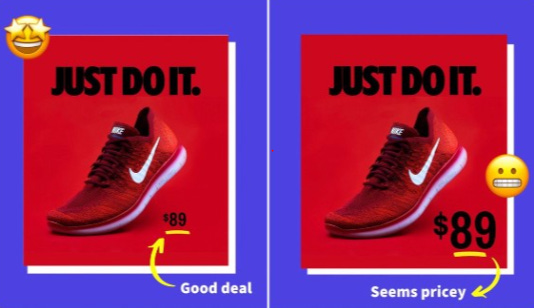What pricing strategy is used by Apple to make any product look inexpensive?
Hacks to strategize your product pricing or call out your biases!
Apple as a product is known for its inflated prices. Apple hooks users on experience and eco-system, but for getting started, usually with an iPhone, the user has to pay a substantially high amount. And despite the increased prices, Apple’s market share in Global Premium Smartphone Share is increasing yearly.
So what pricing strategy is used by Apple to sell more than 20 billion products? How are they making any product look almost inexpensive?
Great Question; let’s figure it out…
1. Price Anchoring
On January 27th, 2010, Steve Jobs unveiled the iPad through a single, 91-minute presentation. With an iPad was launched an excellent pricing strategy, now known as price anchoring.
At minute 75 of his presentation, Steve asked a seemingly innocent question: “What should we price it at?” Instead of just giving a straight answer, he first addressed the rumors of what everyone thought they would charge for the iPad. “If you listen to the pundits, we’ll price it under a thousand dollars — which is code for $999.” As soon as he said those words, the number lit up in bold letters on the screen:
Then, for a full 60 seconds, Steve kept talking. He talked about the technical goals for the iPad. He talked about the cost goals for the iPad. He talked about wanting to “put this in the hands of lots of people.” All the while, that big fat $999 kept staring at the audience in the room and behind the screens.
And then, in one swift motion lasting less than a second, this happened:
“I am thrilled to announce to you that the iPad pricing starts not at $999 but just $499.” Boom. With one sentence and cool animation, Steve completely repositioned the iPad in everyone’s minds. “At $499, a lot of people can afford an iPad.” Applause erupted in the venue, and the iPad was off to make history.
Suddenly, people weren’t paying $499 for a device that may or may not have convinced them based on its merits; no, they were “saving” $500 on a device that was “clearly” worth $999.
In psychology, the mind’s tendency to latch on to any available reference point when making judgments and decisions is called anchoring. And this technique is called Price Anchoring.
Another very common example of Price Anchoring is used by e-commerce.
The highlight of any products on the list is:
The referenced (anchor) strikethrough price
New, lower price
Upfront Savings with Saving %
All of this refers to product pricing, which in turn enables our bias of getting a great deal. All of the Amazon Great Indian Festival, Big Billion Days, or even Black Friday sale does the same job of providing a higher anchor to make a lucrative deal.
Hence, understanding your customer anchors and showing the highest price first are some of the options to leverage while creating your product pricing strategies.
2. Odd Pricing Effect
Coming back to Apple, author Twing Phang says the company’s pricing strategy is all about the number “9” and it’s definitely not a coincidence.
Prices ending in "9" -- from cheap to expensive products -- signal a deal and drive more consumer demand as compared to a whole round number.
"Odd Pricing" relates to another psychological effect called "Left-Digit Bias".
People read numbers from left to right and are anchored to the first digit.
Result: when evaluating prices, we overweight the first digit and changes to that number drive the perception of value.
Also, exact numbers with commas and other punctuations are having way more perceived value than the ones with abbreviations.
E.g. $1,802,952.53 seems much higher than $1.8M
Hence, with price anchoring and odd pricing effect, Apple has justified any cost for their products, including the $19 for simply a Polishing Cloth.
The comments are sought of justified, as below:
Apart from these strategies, there are some more psychological tricks to sell more.
3. BIG FONT = BIGGER PRICE
As mentioned by Inc.com, “The Font Size on Your Price Tags Could Be Reducing Your Sales by 28 Percent. Here's How to Fix It - Before you print those price tags, take a look at the size of the font.”

Hence, display your prices with smaller fonts for better conversions.
4. Removal of ₹ or $ symbol
In general, $ or ₹ symbol triggers your “Pain of Paying”.
Recently, Flipkart app has removed the ₹ symbol from their checkout journey
Hence, leaving the dollar or rupee symbol can persuade more people to buy your product as it reduces the association with losing money.
5. The Zero Price Effect
Even though there is no clear winner between Free and discounted products, if given a choice between “Buy One, Get One Free” and “50% OFF if you Buy 2” the first offer is more compelling. Hence, free beats discount.
Some of the famous business models of Zomato Pro and Flipkart Plus work on FREE shipping on all products even though the free shipping charges are somewhere adjusted in the product pricing itself because companies have realized that the pain of paying for shipping is way higher than the inflated prices.
I hope this article helps in pricing your new products or just calling out your bias whenever you encounter a product pricing from next time onwards.
Enjoy the festive season and always remember:
Keep exploring & keep asking great questions :)















